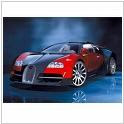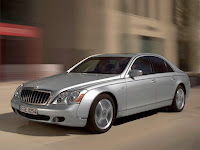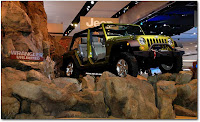There previously have been talks that Tata Motors was eyeing British marques, Land Rover and Jaguar. Rumors of that began to circulate and then died down after a couple of days. In a stunning turn of events, Ford agreed to sell these two prestigious automakers for a “mere” 2.3 billion. I know it’s a lot of money, but it’s “mere” compared to what Ford paid for Jaguar alone when it first acquired the marquee. What more for both, right? Maybe it’s because of the plummeting sales of Jaguar this year. Moreover, Ford, under the sale agreement, still has to cover the pension plans of these two, meaning they’ll still be paying for the manufacturing and distribution of these two for a period of twelve months. This will be to ease the transition of ownership. It is certainly very generous of them.
The sale is not yet final though, as it will take the two companies’ months to sort out regulatory approvals. The rough estimate when the sale can be finalized is probable by mid-year. So far, this deal has benefited none of the two companies. In an article in the Business Standard, it was cited how the acquisition of Jaguar and Land Rover has affected Tata Motors’ stocks. The writer stated that:
The Tata Motors stock fell the most in two months on the Bombay Stock Exchange (BSE) on concerns of decline in profits of the company after it agreed to buy Jaguar and Land Rover (JLR) from Ford Motor for $2.3 billion.
The stock dropped as much as 7.3% to a low of Rs 630 and traded at Rs 647 at 1320 hours on the BSE. The benchmark index of the BSE, the Sensex, was down 110 points.
Analysts are of the view that Tata Motor's loans to finance the purchase may increase interest payments and profit may fall by 30% next year. The company had tied up $3 billion of short-term loans to fund its acquisition, seeking overseas markets and new technology.
The only good thing that it has brought Tata Motors is the recognition as a major player in the global automotive industry. And combined with China’s play on being the # 1 automobile market in the world, it seems the future is bright for the Asian automotive industry. To strengthen this idea, here are a couple of comments placed in an article in the Financial Times: Mergermarket, to wit:
The deal is small by the standards of the global automotive industry – or of other big mergers and acquisitions in industry and finance – but has been closely followed as a new high-water mark for an Asian company in acquiring two world-renowned automaking marques.
“Their [Tata’s] acquisition of the Jaguar and Land Rover brands will make the world sit up and take notice of India’s growing prominence in the global automotive arena,” said Anand Mahindra, managing director of rival Indian automaker Mahindra & Mahindra, which also considered bidding for the marques.
It may not be a big deal today since Tata Motors is still recoiling from the shock of getting two highly-renowned auto-makers. But once they take the reins, I am willing to bet that they can turn this slump around and turn it into a good thing. I won’t be surprised at all if in the following years, Indian and Chinese companies will buy-out more and more foreign marques, cementing their hold in the process on the global automotive industry. The only thing that they have to face is the challenge of building automobiles that are at par or even better than what are being manufactured today. And considering their impressive business portfolio, I wouldn’t be amazed at all if they rise up to the challenge.

















